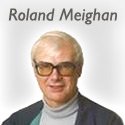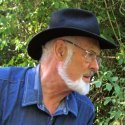Roland Meighan believed schools should be recycled into all-age invitational Community Learning Centres – a core part of the personalised educational landscape. There would be commensurate recycling of teachers into a variety of roles. Learners would be largely self-managed.
We might imagine a little further as to what this new personalised educational landscape could mean for people by 2025:
All schools have now evolved into all-age Community Learning Centres (CLC) open 24/7 and all the year round. They all now have the most outstanding world-class facilities for learning, sport and leisure housed in buildings of inspirational design and functionality. Typically, they are built around a comprehensive multi-media library, ICT hub and resource centre. Here much of the community media and publishing facilities are based. Cultural, sporting, health and social service components exist according to local needs.
The networks, clusters and federations of schools of the previous decades developed into the CLC networks and collaboratively ensure that learning and setting needs of their communities can be met.
The networks are bases for the pedagogues (PEDAs) (Meighan 2005) and extended educational professionals. Master educators steeped in the knowledge and skills of how we learn, how we can accelerate learning, and in human development. They have expertise in assisting those who have challenges in their learning. They act across a range of roles: guide, mentor, coach, tutor, teacher and assessor. They assist in co-producing personal learning plans and help in solution building. They bring together learners with learning experiences and courses. They put learners in touch with key professionals in CLCs. with community based tutors and volunteers, with work experiences and apprenticeships. They are important guides and links beyond the local community. They help co-create learning journeys, inspire and challenge.
Learning takes place in a range of settings in the landscape according to the needs, aspirations and aptitudes of the learner. CLCs still run curricular courses but rarely in groups of more than 10. This facilitates the high quality and quantity of discourse we expect in most learning. The CLCs operate on various cycles so that not all learners and staff and others are in at the same time. There are no traditional schooldays, weekends and holidays.
Distance learning is widely available with external expertise being channelled in via digital links and local follow up. Most learners have flexible learning paths with episodes made up of localised CLC experiences, independent study, distance learning and small group tutoring. Some are home-base educated and others have periods of home learning. The range of options described by Meighan are but a fraction of the available opportunities and all learners have access to high quality resources and support wherever they learn. They follow a mixture of their own naturally defined curricula and they select and modify the catalogue of curricula found locally and globally.
Issue-based, integrated curricula and research are at the heart of most learning rather than the silos of past subject curricula. Experiences are open to all regardless of age. Learners and mentors are well used to supporting, and teaching across the age ranges. What impresses visitors to communities is the early age at which the learners attain independence. They come expecting to see choice equalling a laissez-faire, shallow approach to education. Nothing could be further from reality. They find highly committed learners, learning more and more effectively than they did under mass-schooling. The learners are freed from enforced timescales, lessons, terms and years. Readiness is pivotal.
Learning is contextualised in communities where learning is valued highly and where everyone shares the sense of responsibility. Learners are learning because they want to for the benefit of their futures and at their pace and are not jumping through hurdles at the behest of others.
Learning is available anytime and independent of place. All citizens have access to the latest ICT, worldwide web and digital connections at home. The country long considered this digital future investment as a necessity in a modern educational landscape. It is recognised as a freely available utility along with its transport system.
Some of this kind of thinking already permeates educational futures debates and it is certainly not new. The proposed Minnesota Experimental City (MXC) planned as a laboratory for social, technical and environmental innovation along with a new approach to education looked to replace schools as we know them (Glines 1989). Schools were to be changed into a variety of learning centres:
Early life studios will be designed so that parents, young children and staff members can meet regularly to create an environment that provides creative learning experiences and offers opportunities for parents and older young people and other adults to learn about the mental, emotional, physical and other needs of early childhood.
Stimulus studios will be established, where there will be a constantly changing array of prompts to provoke and extend learners’ perceptions and thinking, to arouse curiosity, to stimulate laughter and, wonder, reverence, imagination and competence. There will be films, tapes, videos, exhibitions, books, resourceful community and virtual reality experiences.
Gaming studios where learning takes place by playing educational games, where there is the opportunity to take part in simulations and role-play, and where arena theatre events will be developed.
Project studios will be available where learners work on real projects, such as making a video, writing a book or TV script, designing new materials and products, or planning projects to be undertaken later in the community. In the UK, Walsall Community Arts has produced a Dreaming for Real project pack which has been setting such projects in motion.
Learner banks will be designed to store and loan out the tools and equipment needed by learners. A large part of the bank would store books and other material now found in conventional libraries.
Family life Centres where families will learn together. The centre will offer meetings, seminars, tutoring or community-centred discussions. For those who learn well some of the time in school-type settings, these will be provided here.
Community facilities such as homes, businesses, public places and sports facilities, will be available as appropriate, as part of the learning network. The network of learning centres will remain permanently fluid, open to evaluation, review and change.
(From Meighan and Harber 2007)
John Adcock detailed a vision with many features in common with the Minnesota Experimental City Model in his two books In Place of Schools (1995) and Teaching Tomorrow (2000). Even a global corporation like Arthur Andersen Consulting conceived of multi-age Community Learning Centres in every neighbourhood for self-directed learners with facilitators and not teachers (Arthur Andersen and Creative Learning Systems 1999).
The essential point here is that CLCs develop to meet the community need and are established on personalisation principles. Common core assets, resources and functions might exist but there might also be differences or specialisms within neighbouring CLCs. Child-care functions would be an important feature to permit the kind of variety in journeys and episodes to take place.
CLCs would be at the core of social policy and be subject to massive funding, continuous development, adaptation and redevelopment as needs change.
Question (from the editors of Education News, New York City):
‘If America’s schools were to take one giant step forward this year toward a better tomorrow, what should it be?’
Answer:
‘It would be to let every child be the planner, director and assessor of his (her) own education, to allow and encourage him, with the inspiration and guidance of more experienced and expert people, and as much help as he asked for, to decide what he is to learn, when he is to learn it, and how he is to learn it, and how well he is learning it. It would be to make our schools, instead of what they are, which is jails for children, into a resource for free and independent learning which everyone in the community, of whatever age, could use as much or as little as he wanted.’
John Holt
‘Advisors and facilitators were self-selected by the learners. Students could ‘vacation’ whenever they wanted, or ‘learn’ at school, at home, in the community, or in the world…’
Don Glines (2006) talking about an enlightened programme at the Wilson Campus School, Minnesota
References.
Adcock, J. (1995) In Place of Schools: London. New Education Press.
Adock, J. (2000) Teaching Tomorrow. Personal tuition as an alternative to school: Nottingham. Education Now Books.
Arthur Andersen and Creative Learning Systems (1999) School of the Future Presentations Arthur Andersen and Creative Learning Systems.
Glines, D. (2002) Educational Alternatives for Everyone. A Handbook for Educators, Families, Politicians: St Paul, Minnesota. The International Association for Learning Alternatives (IALA).
Glines, D. (2006) Personalising Education and Year Round Learning: Yesterday, Today and Tomorrow: in The Journal of Personalised Education Now Issue 4. CPE/PEN
Meighan, R. (2005) Comparing Learning Systems: the good, the bad, the ugly and the counter-productive: Nottingham. Educational Heretics Press.
Meighan, R. and Harber, C. (2007) A Sociology of Educating: London. Continuum.



